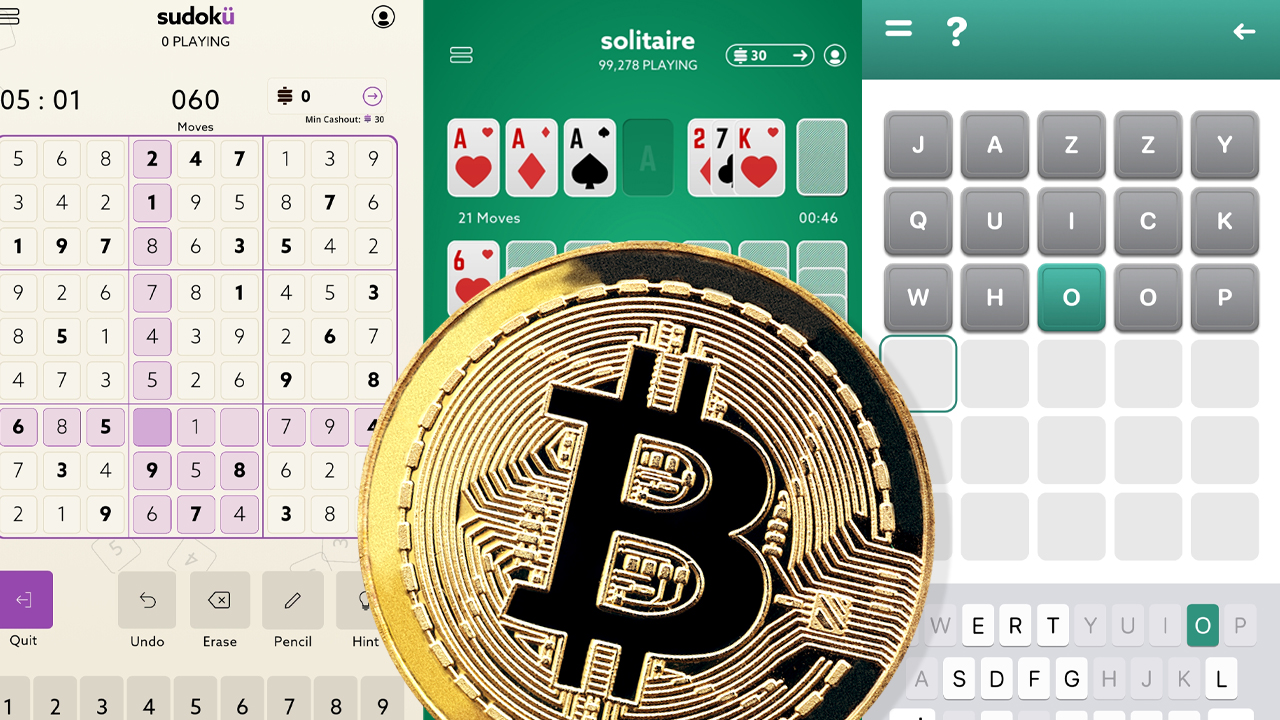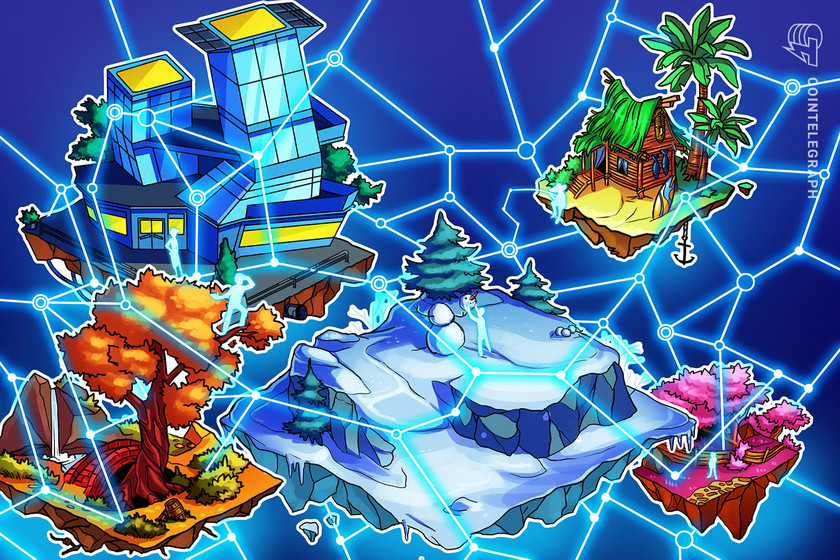
How and where to get analytics on the emerging projects in the GameFi space.
From the massive fall of Bitcoin’s (BTC) price to the collapse of crypto exchange FTX, 2022 was full of upheaval for the blockchain industry. But the blockchain community has always been resilient, finding new ways to develop in the most challenging times.
A striking example of optimism and growth is the development of the GameFi industry, which combines gaming, decentralized finance (DeFi), nonfungible tokens (NFTs) and the metaverse.
In 2021, GameFi became a growth leader in the crypto space, with successful projects like Gala Games, Decentraland, The Sandbox and Axie Infinity.
The GameFi sector has continued to develop, attracting more and more investment. In 2022, the volume of venture investments in Web3 games and the metaverse amounted to $7.6 billion. Some analysts predict a valuation of $2.8 billion for the GameFi sector by 2028.
However, a sudden influx of investors in this growing sector has also resulted in many low-quality games suffering from poor in-game economics, as well as monotonous and underdeveloped gameplay.
How can a gamer looking for a good project find the right one? Cointelegraph has found several GameFi analytics resources to help potential gamers weigh the pros and cons of each platform.
DappRadar
DappRadar is one of the most popular decentralized application (DApp) analytics services. Founded in 2018, it provides statistics on DeFi, GameFi and NFTs. The platform has data for over 2,000 NFT games.
Pros
One of the most popular features of DappRadar is located in the “rankings” tab, which allows users to rank several DApps related to GameFi, DeFi projects, gambling, exchanges, NFT collections, marketplaces, social networks and different blockchains. DApps are ranked according to criteria such as the number of unique active wallets (UAW), number of transactions, transaction volume and the total balance of funds in the smart contract.

The page of an individual project contains its rating, tags and links to social networks, as well as its description. In the middle of the page, standard indicators (UAW, number of transactions, volume, balance) are displayed in addition to a graph of changes for different periods.
General statistics on DApps can be obtained in the “Industry Overview” tab after selecting the period, category and protocol. DappRadar also periodically publishes analytical notes, which are located in the “Reports” and “Blog” sections.
Recent: Could NFTs and crypto help Japan’s ‘Cool Japan’ strategy?
There are two additional options for NFTs. First is the NFT Explorer, in which users can sort not only the general list of collections, but also the NFTs of an individual collection and even a general gallery of NFTs from different collections. The page for an individual NFT shows its name, owner, minimum price, last sale price, blockchain, NFT metadata and trading history. A second option is the NFT Value Estimator, which displays the expected price of an NFT based on current and past price performance.

For game developers, DappRadar has a “Developers” section where game founders can promote a new product through advertising campaigns and other marketing techniques.
Cons
The wealth of information provided for each project could prove difficult to navigate for newcomers who may only want basic information about a project.
Another disadvantage of the platform is that, for a long time, the selection of NFT games was limited to those on the Ethereum blockchain, while projects on other blockchains were not taken into account.
The situation improved this year when the site increased the number of monitored blockchains from three to 48. Considerable funds have also been allocated for the development of new technical solutions.
Dapp.com
Dapp.com is the world's largest DApp distribution platform. Dapp.com lists over 8,000 DApps built on more than 20 blockchains like Ethereum, EOS, TRON, Steem, TomoChain, IOST, Stacks and others. The platform showcases DApps based on data analytics, community feedback and user comments.
Pros
The platform has a built-in wallet called DappStoreWallet so that users can easily access and use DApps associated with various blockchains.
The ecosystem of the project is powered by Dapp Token (DAPPT). Token holders are able to participate in voting on the platform, launch projects on the platform through staking, and more.
The platform has a “Market Report” section where users can view quarterly reports in various areas, including games.
The advantages of the platform include a simple interface and navigation, where users can view game ratings according to various criteria — for example, by increasing or decreasing prices for tokens, by user reviews, or by level of risk.

Users of the platform can not only see the ratings of NFT projects themselves, but also read general news about NFT projects.
Cons
For an inexperienced user, it is almost impossible to find the quarterly analytical reports section. The link to the page with reports is at the very bottom of the page and represented by small text.
At the same time, the reports themselves clearly stalled for a couple of years, with the most recent appearing for Q2 of 2020. At the same time, the quality and depth of analytics is almost on par with that of DappRadar.
The project listings are not informative and contain only a brief description of the project in a couple of sentences without the current price of the token or the number of active users. Such information must be viewed in the overall rating of projects, which is inconvenient. The majority of the page for each project is occupied by user comments, which are very important, but it seems that Dapp.com is primarily aimed at creating a community and not at providing analytics.
CryptoSlam
CryptoSlam is an NFT market data aggregator. The platform can be used to analyze trading volumes in the NFT market, identify the most popular collections of digital assets, and track release dates for new tokens.
The CryptoSlam team has included various information about the projects on the pages of the collections and the individual NFTs themselves. The project description has a section on online sales statistics, which the system updates as owners change. The platform can also be used to collect data on NFTs of interest.
Pros
The main feature of the platform is its real-time data showing movement in the NFT industry. Featured data includes the volume of sales of NFT tokens, the number of token holders, on which blockchain an NFT resides, and the number of holders.
It is convenient that users can sort NFT projects in several tables on one web page by various parameters like sales volume within a particular game, or by the price of tokens.

One unique feature of the platform is its live sales section, where one can see which user sold an NFT token and at what price, including from which address and to which address. This parameter is constantly updated automatically.
This platform is a very convenient service for the continuous tracking of the work of an NFT project, within which real transactions can be traced.
Another plus of the platform is that it is developing. In January 2023, the Forkast.News company and CryptoSlam teamed up to create the Forkast Labs project. The product could offer users a new media analytics platform for the digital economy. According to the team, the decision to create Forkast Labs was made due to the lack of a standard methodology for determining the true value of digital assets, which is mainly measured by current prices for cryptocurrencies. The timing of the launch of the project is still unknown.
Cons
One con is that the platform doesn’t have any analytical reports. The service only allows for the monitoring of NFT projects, albeit in real time, but does not evaluate activities for a particular period. Perhaps this defect will be corrected after the launch of the Forkast Labs project.
Another downside is the inability to separate NFT projects by indstury — gaming, gambling or finance, for example. If the user wants to see only NFT gaming projects and allocate them to a separate slot or table, then they will not be able to do this since the service does not have such a function.
Just like Dapp.com, this platform contains a lack of detailed information about projects, such as creators, at what stage of development the project is, news about collaborations, etc.
Conclusion
The main reason for using NFT analytics tools is to help limit the amount of fraud in the major marketplaces. Investing in NFTs can be time consuming, somewhat risky and nearly impossible unless users spend hours on social media platforms and NFT trading platforms looking through the myriad NFTs available.
As can be seen from the description of the most popular analytics platforms, there is no perfect one that contains all relevant information in one place, but such projects are critical for crypto enthusiasts.
Recent: Is the SEC’s action against BUSD more about Binance than stablecoins?
Sebastien Borget, president of the Blockchain Game Alliance, told Cointelegraph that he believes that analytics platforms should pay more attention not only to numbers, but to players and users:
“NFT games analytics platforms should expand beyond just the on-chain transaction data to reflect what's happening in a game or how popular it actually it, and work on broadening to all the activities games have to offer to players — to show that games are first and foremost fun entertainment products where people spend time, and transactions are not the only gameplay in them.”


















